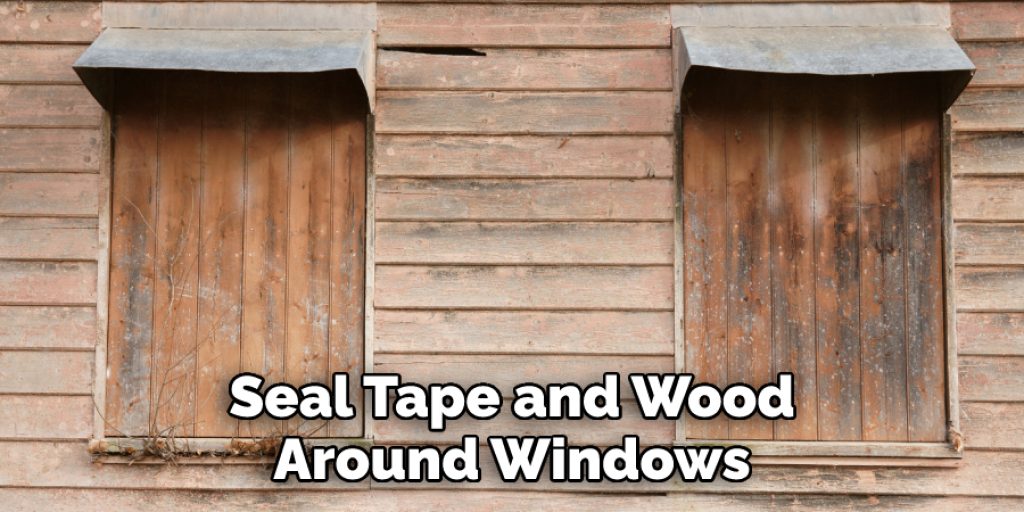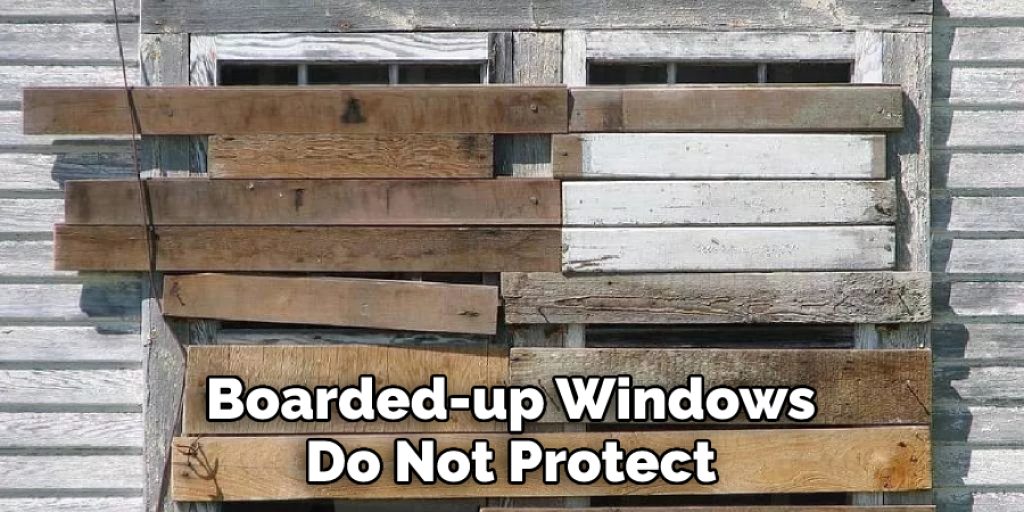How to Board Up a Broken Window
Introduction
Attic windows are often the first to be broken in a natural disaster. These windows are usually not accessible from outside your home for boarding up, so you will need to board up the window inside your attic. This article is intended to provide information for safely doing this. Boarding up a window will surely protect the window from further damage. I will discuss how to board up a broken window in this article. So let us get started.

Why Board Up a Broken Window?
When a window is broken, it should be boarded up as quickly as possible. This prevents additional damage from occurring and also deters vandals from trying to enter the property again. However, boarding windows can be a tedious process for homeowners. Sometimes, you may need to use one of them while waiting for replacement parts if you replace the glass in your window or door frames. If this is the case, there are still things that you can do to help prevent break-ins by boarding up broken windows and doors so they don’t look like obvious entries into your home.
Step-wise Guide on How to Board Up a Broken Window
You don’t need to be a contractor or spend much money replacing your broken window panes. All you have to do is board up the broken windows using cheap wood and nails so that no one can use them to enter your home or office. Here are simple steps for boarding up windows:
Step 1 –
In order to fix a broken window, you will need to find a piece of plywood or a wooden plank that is big enough to cover the entire broken window pane. You may need to stack a few pieces of wood on top of each other to make them strong enough. Once you have the wood, drill holes through the planks at all points where they touch the window’s frame. Then, use small nails or screws to lock the planks in place. Make sure that there are no gaps left between the planks that a burglar could use to reach inside and unlock the window.
Step 2 –
Apply a thick layer of paint to every plank used for boarding the windowpane to keep rainwater out and make it look more presentable from the outside. This would also prevent your neighbors from looking inside. You can also use plastic sheets or thin wooden boards instead of plywood as they do not require painting but are easy to break if someone puts much force on them.

Step 3 –
Secure all planks together by fastening them with screws or nails, so there are no gaps in between, exposing their edges.
Step 4 –
Use strong adhesive tapes to cover the joints and spaces where wooden boards meet each other, ensuring no light comes through these cracks so that burglars cannot break in.
Step 5 –
Use red or yellow colored tape on the boards to be easily noticed from the outside.
Step 6 –
Cover the broken window pane with plywood and secure it using various fasteners. Put a few planks around these boards to ensure no one can climb through the top or bottom gaps. These pieces will further support your boarded windows’ security system.
Precautions While Performing How to Board Up a Broken Window
- Power off the main switch of your home and call utility companies that you will be working with a broken window for several hours.
- Set tape and lumber in place using a ladder; larger items like chairs, tables, etc., should not be removed from one room to another.
- Wear protective gear such as boots, gloves, goggles, dust masks, and respirators if necessary while handling boards and cleaning up debris after the job.
- Use lumber in a way that sharp ends are facing inward; keep windows, doors, and other similar openings open for safety reasons.
- If possible, stay indoors with the broken window blocked off to avoid particles from getting into the lungs and eyes, which is common during repair work.
- Seal tape and wood around windows or glass that has broken out using spray foam if necessary.
- Maintain temperatures between 40-65 degrees Fahrenheit for best drying time results.
- Practice caution while climbing ladders; be aware of tools that may slant while climbing down as well as slippery floors due to spilled water or debris on flooring surfaces.
- The most important tip to remember when boarding up a broken window is that it needs to be done immediately to prevent unwanted guests and insects from

Benefits of Boarding Up a Broken Window
- Safeguard your family and pets from any harmful airborne particles such as toxins, and dust, so you have assured an ample supply of fresh air circulating.
- Protect the inside of your home by preventing further water damage caused by rain, snow, or ice in case you don’t have time to clean up the entire area.
- Cover broken windows until repairs can be made quickly; this will make it easier for insurance companies to assess damages and avoid theft attempts if possible.
- Stop leaks in ceilings, walls, basements, or wet carpets if you can’t yet do repairs.
- No need to rush to find a contractor for repair services since the boarded-up window will protect your home and prevent further damage while looking around for a good company to fix it.
What Kind of Materials is Best for Use?
Keep in mind what is exposed to the elements. Wood and fiberglass are better in dry environments or used indoors. Plastic works well if you’re using it outside because it won’t warp, split, rot or splinter like wood does when wet.

Plywood is another commonly used material for installing window covering due to its durability. It may be painted or stained; however, glass can chip from paint over time and needs to be treated with a UV protective coating, especially if the environment calls for it one made of polycarbonate plastic. Metal screening should also be replaced yearly since rain will rust metal quickly, causing rot around wood frames and other materials that come into contact with it.
Disadvantages of Boarding Up a Broken Window
Boarding up a broken window is often the first thing that comes to mind when homeowners think about what to do in an emergency. However, in a natural disaster or unforeseen event, most people have no idea how they will react or what they need to protect their property. As a result, most people don’t consider looking for an alternative solution to boarding up and instead move on with their lives after the storm passes.
This is not always the best idea because boarding up cracked or broken windows can be more problematic than it seems. There are many disadvantages, including Increased Damage.
Boarded-up windows do not protect from moisture damage due to rain and snow accumulation outside windowsills, causing water intrusion underneath siding into your walls, allowing mold to grow.

Burglars will see boarded windows as an easy target to break into your home. A little bit of water can cause major structural damage and rotting wood. When there’s no glass, it doesn’t take much force for a burglar to break through the windowpane or wooden frame creating direct access to your house and belongings. Structural Damage
When you board up a broken window with plywood, you are putting stress on an already compromised structure that is susceptible to rot and decay due to heavy winds blowing throughout the house, pushing the plywood further into your wall, causing permanent damage costing thousands of dollars to repair later down the road.
Conclusion
All you need to know is how to board up a broken window at home and office if burglars break them during an entry into your premises, giving them access for theft or robbery. Even if the intruder fails in breaking glass by throwing stones or using brickbats, as soon as he sees wooden planking covering the place, he will try to find other entry points, providing you enough time to take immediate action and stop him from stealing your property.




